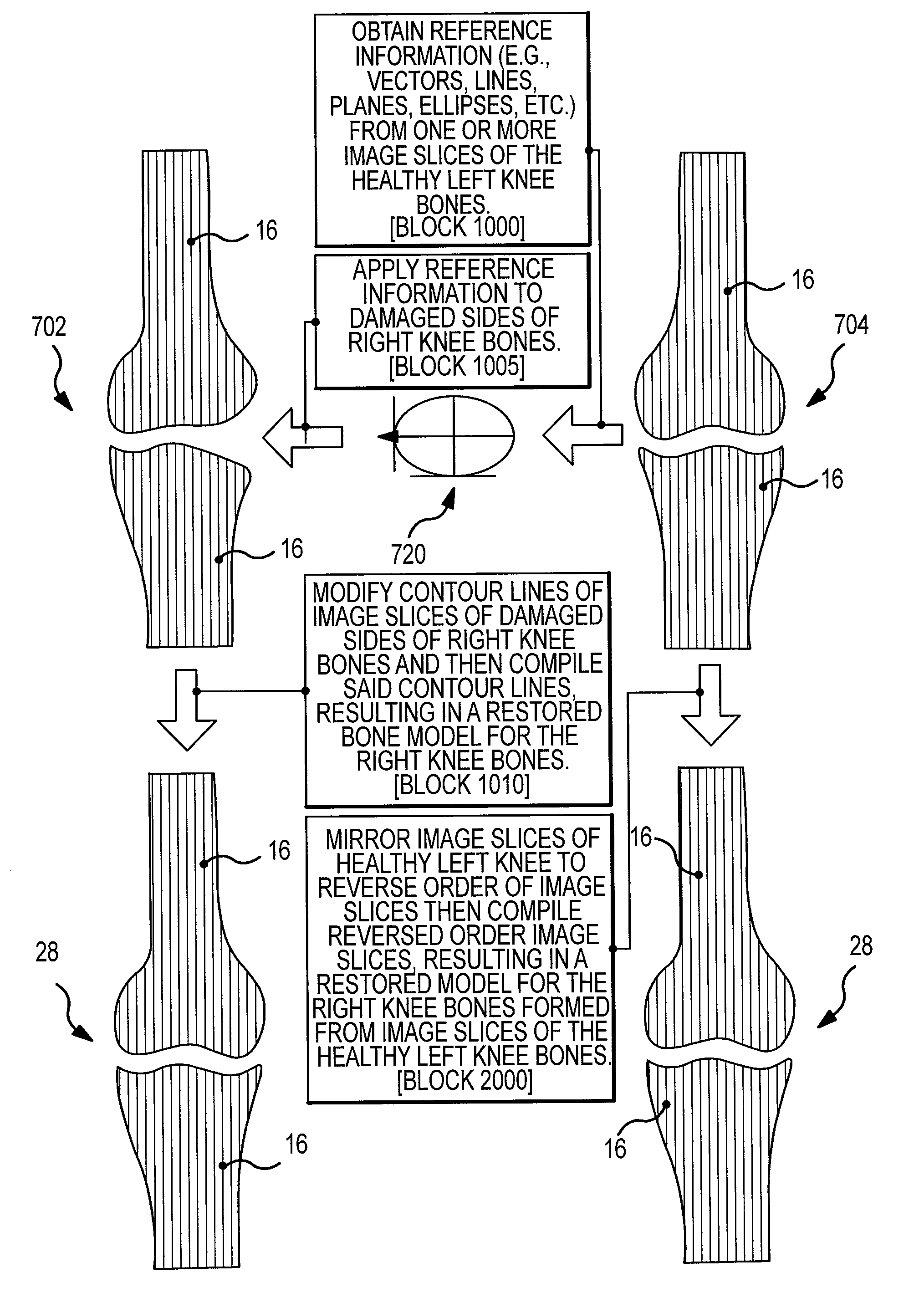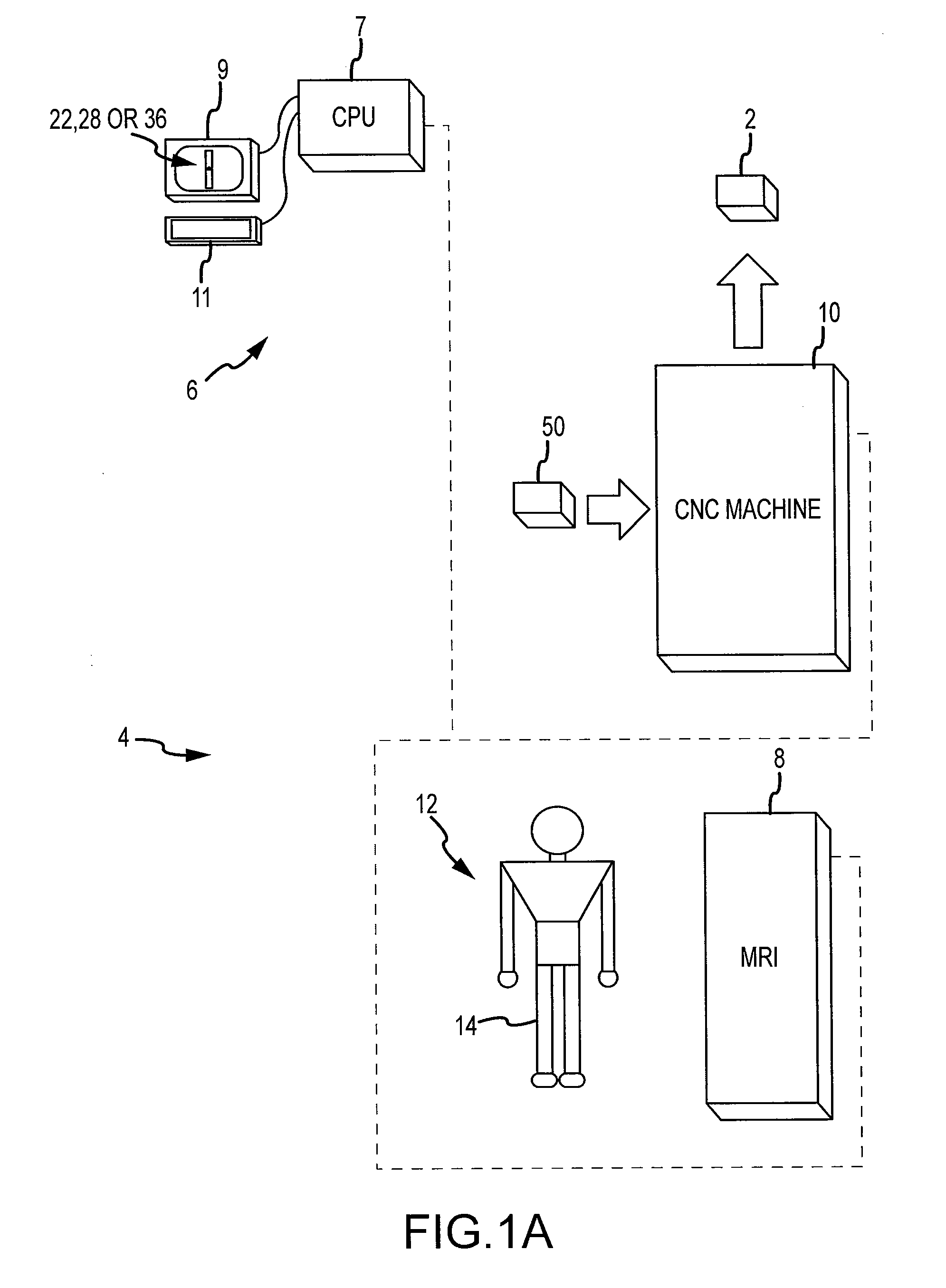Generation of a computerized bone model representative of a pre-degenerated state and useable in the design and manufacture of arthroplasty devices
a computerized bone model and pre-degeneration technology, applied in the field of customized surgical devices manufacturing systems, can solve the problems of bone and joint damage, pain, stiffness, decreased mobility, etc., and achieve the effect of reducing the likelihood of prosthesis loosening and improving the success ra
- Summary
- Abstract
- Description
- Claims
- Application Information
AI Technical Summary
Benefits of technology
Problems solved by technology
Method used
Image
Examples
first embodiment
[0171]In a first embodiment, the N1 slice information may be applied only to the contour line of the N2 slice or another specific slice. In other words, information of a specific reference slice may be applied to a contour line of a single specific damaged slice with which the specific reference slice is coordinated with via manual selection or an algorithm for automatic selection. For example, in one embodiment, the N1 slice information may be manually or automatically coordinated to be applied only to the N2 slice contour line, and the N3 slice information may be manually or automatically coordinated to be applied only to the N4 slice contour line. Other reference side slice information may be similarly coordinated with and applied to other damaged side slice contours in a similar fashion. Coordination between a specific reference slice and a specific damaged slice may be according to various criteria, for example, similarity of the function and / or shape of the bone regions pertai...
second embodiment
[0172]In a second embodiment, the N1 slice information or the slice information of another specific slice may be the only image slice used as a reference slice for the contour lines of most, if not all, of the damaged slices. In other words, the N1 image slice information may be the only reference side information used (i.e., to the exclusion of, for example, the N3 image slice information) in the restoration of the contour lines of most, if not each, damaged side image slice (i.e., the N1 image slice information is applied to the contour lines of the N2 and N4 image slices and the N3 image slice information is not used). In such an embodiment, the appropriate single reference image slice may be identified via manual identification or automatic identification via, for example, an algorithm. The identification may be according to certain criteria, such as, for example, which reference image slice is most likely to contain the most accurate and dependable reference information.
[0173]W...
PUM
 Login to View More
Login to View More Abstract
Description
Claims
Application Information
 Login to View More
Login to View More - R&D
- Intellectual Property
- Life Sciences
- Materials
- Tech Scout
- Unparalleled Data Quality
- Higher Quality Content
- 60% Fewer Hallucinations
Browse by: Latest US Patents, China's latest patents, Technical Efficacy Thesaurus, Application Domain, Technology Topic, Popular Technical Reports.
© 2025 PatSnap. All rights reserved.Legal|Privacy policy|Modern Slavery Act Transparency Statement|Sitemap|About US| Contact US: help@patsnap.com



